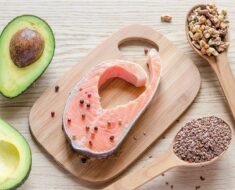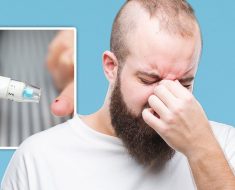Scientists at Nanyang Technological University, Singapore (NTU Singapore) have developed a new biomaterial made entirely from discarded bullfrog skin and fish scales that could help in bone repair.
The porous biomaterial, which contains the same compounds that are predominant in bones, acts as a scaffold for bone-forming cells to adhere to and multiply, leading to the formation of new bone.
Through laboratory experiments, the NTU Singapore team found that human bone-forming cells seeded onto the biomaterial scaffold successfully attached themselves and started multiplying – a sign of growth. They also found that the risk of the biomaterial triggering an inflammatory response is low.
Such a scaffold could be used to help with the regeneration of bone tissue lost to disease or injury, such as jaw defects from trauma or cancer surgery. It could also assist bone growth around surgical implants such as dental implants.
The scientists believe the biomaterial is a promising alternative to the current standard practice of using a patient's own tissues, which requires additional surgery for bone extraction. At the same time, the production of this biomaterial tackles the problem of aquaculture waste, said Assistant Professor Dalton Tay of the NTU School of Materials Science and Engineering (MSE), who led the multidisciplinary study.
More than 20 million tons of fishery by-products, such as fins, scales, and skins, are discarded every year. In Singapore, the combined annual consumption of frog flesh and fish is estimated to be around 100 million kilograms, making bullfrog skin and fish scales two of Singapore's largest aquaculture waste side streams.
We took the 'waste-to-resource' approach in our study and turned discards into a high-value material with biomedical applications, closing the waste loop in the process. Our lab studies showed that the biomaterial we have engineered could be a promising option that helps with bone repair. The potential for this biomaterial is very broad, ranging from repairing bone defects due to injury or ageing, to dental applications for aesthetics. Our research builds on NTU's body of work in the area of sustainability and is in line with Singapore's circular economy approach towards a zero-waste nation."
Dalton Tay, Assistant Professor, Nanyang Technological University
Professor Matthew Hu Xiao, the study's co-author and Director of the Environmental Chemistry and Materials Centre, Nanyang Environment and Water Research Institute (NEWRI), added: "These waste streams can also be converted into green chemicals and materials for environmental remediation and timely treatment can reduce wastewater contamination."
Clinical Associate Professor Goh Bee Tin, Director for Research at the National Dental Centre Singapore, who was not involved in the study, said: "The National Dental Centre Singapore is excited about the use of bullfrog skin as a natural biomaterial for tissue regeneration. We see many potential dental applications ranging from the regeneration of gum tissues in periodontal disease, to bone for placement of dental implants, to jawbone following tumour surgery. Obviating the need for additional bone harvesting surgery also translates to time and cost savings, and less pain for patients."
The research findings were published online in Materials Science and Engineering C in April and will be published in Volume 126 of the journal in July.
The research team has filed patents for the biomaterial's wound healing and bone tissue engineering applications. The team is now further evaluating the long-term safety and efficacy of the biomaterial as dental products under a grant from the China-Singapore International Joint Research Institute and aims to bring the waste-to-resource technological pipeline closer to commercialisation.
Turning waste to treasure
With the combined annual consumption of frog flesh and fish in Singapore estimated to be around 100 million kilograms, bullfrog skin and fish scales are two of Singapore's largest aquaculture waste side streams. The fishery waste used by the NTU team was collected from Khai Seng Fish Farm and Jurong Frog Farm.
To make the biomaterial, the team first extracted Type 1 tropocollagen (many molecules of which form collagen fibres) from the discarded skins of the American bullfrog, locally farmed and imported into Singapore in large numbers for consumption; and hydroxyapatite (a calcium-phosphate compound) from the scales of snakehead fish, commonly known as the Toman fish.
Collagen and hydroxyapatite (HA) are two predominant components found in bones, thus conferring on the biomaterial a structure, composition, and ability to promote cell attachment that are like the bone. These two components also make the biomaterial tough.
The scientists removed all impurities from the bullfrog skin, then blended it to form a thick collagenous paste that is diluted with water. Collagen was then extracted from this mix. "Using this approach, we were able to obtain the highest ever reported yield of collagen of approximately 70 per cent from frog skin, thus making this approach commercially viable," said Asst Prof Tay, who is also from the NTU School of Biological Sciences (SBS).
HA was harvested from discarded fish scales through calcination – a purification process that requires high heat – to remove the organic matter, and then air-dried.
The biomaterial was synthesised by adding HA powder to the extracted collagen, then cast into a mould to produce a 3D porous scaffold. This entire process took less than two weeks and the team believes it can be both further shortened and scaled-up.
Proof-of-concept experiment
To assess the biological performance of the porous biomaterial scaffold for bone repair, the scientists seeded bone-forming cells onto the scaffold.
In their laboratory experiments, they found that the number of cells increased significantly. After a week, the cells were uniformly distributed across the scaffold – an indicator that the scaffold could promote proper cellular activities and eventually lead to the formation of tissues. The scientists also found that the presence of HA in the biomaterial significantly enhanced bone formation.
The biomaterial was also tested for its tendency to cause an inflammatory response, which is common after a biomaterial is implanted in the body.
Using real-time polymerase chain reaction, the scientists found that the expression level of pro-inflammatory genes in human immune cells exposed to the biomaterial remained "relatively modest" when compared to a control exposed to endotoxins, a compound known to stimulate immune response, said Asst Prof Tay.
For instance, the expression of the gene IL6 in the biomaterial group was negligible and at least 50 times lower than that of the endotoxins-exposed immune cells. This suggests that the risk of the NTU-developed biomaterial to trigger an excessive acute inflammatory response is low.
Taken together, these findings demonstrate the potential of the biomaterial scaffold, synthesised from discarded bullfrog skin and fish scales, as a promising waste-to-resource bone graft substitute material for bone repair and regeneration.
Ms Chelsea Wan, Director, Jurong Frog Farm said: "The aquaculture industry is an important avenue to meet the global growing demand for safe and quality seafood, but a big challenge we face is the huge wastage and downcycling of valuable aquatic resources. In Singapore, the combined annual consumption of frog flesh and fish is estimated to be around 100 million kilograms, making bullfrog skin and fish scales two of the largest aquaculture waste side streams here. The integration of multiple seafood waste streams into a single high value product is a leading example of sustainable innovation for the aquaculture industry."
Going forward, the research team hopes to work with clinical and industrial partners on animal studies to find out how tissues in the body would respond to this biomaterial in the long term, and the material's ability to repair bone defects and dermal wounds, as well as to bring the entire waste-to-resource technological pipeline closer to commercialisation.
Nanyang Technological University
Posted in: Medical Science News | Medical Research News | Medical Condition News
Tags: Bee, Bone, Bone Graft, Calcium, Cancer, Cell, Chemicals, Collagen, Compound, Contamination, Efficacy, Fish, Gene, Genes, heat, Hydroxyapatite, Immune Response, Implants, Laboratory, Pain, Periodontal Disease, Polymerase, Polymerase Chain Reaction, Research, Skin, Surgery, Tissue Engineering, Trauma, Wound, Wound Healing
Source: Read Full Article





